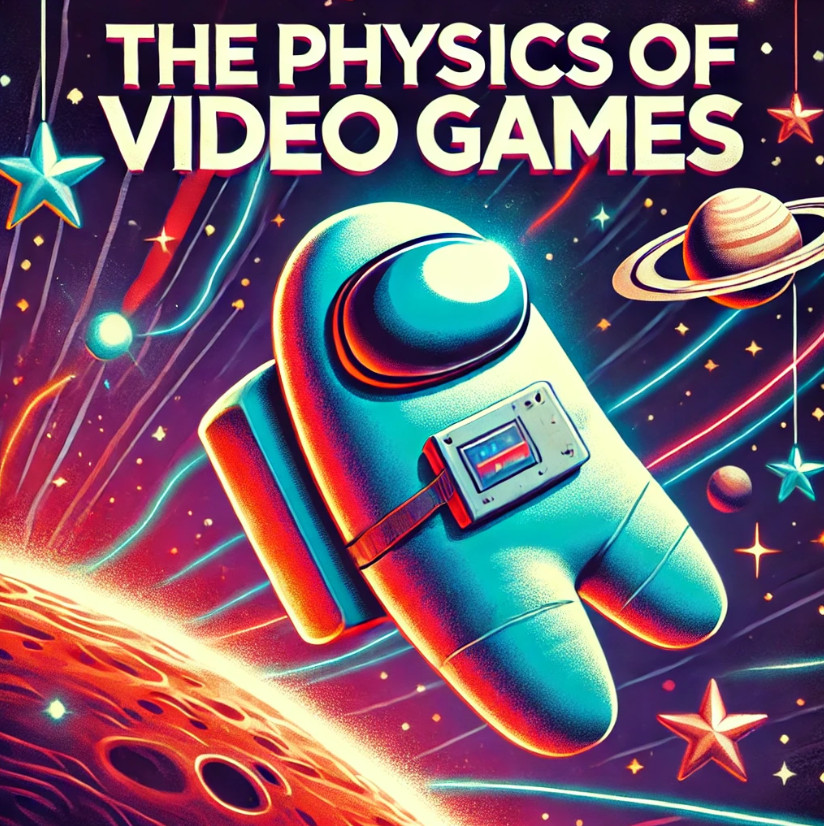If you’ve ever sabotaged a reactor, fixed electrical wiring, or vented away from danger in Among Us, you’ve experienced the subtle genius of the physics of video games. While Among Us might seem simple compared to the flashy explosions of Fortnite or the sprawling landscapes of Minecraft, its immersive gameplay owes a lot to the physics engine running behind the scenes.
Among Us is built using the Unity engine, which powers not only indie hits but also some of the biggest games in the world. Let’s dive into the physics concepts behind Among Us, how Unity makes them work, and what would happen if the physics engine took a day off.
Unity: The Power Behind Among Us
Unity, the game engine behind Among Us, includes a physics system called PhysX, which handles movement, collisions, and object interactions. Even in a seemingly simple game like Among Us, these systems are essential. Here’s how Unity brings the spaceship and its crewmates to life:
- Collisions and Movement: When you walk around the map, Unity’s physics engine ensures your crewmate doesn’t glide through walls or get stuck in objects. The collision detection system calculates when your character interacts with the environment, ensuring smooth navigation.
- Tasks with Realistic Interactions: Tasks like pulling levers or pressing buttons rely on Unity’s rigidbody physics. This system ensures objects behave like they would in the real world, with predictable motion and responses to player input.
- Impostor Shenanigans: The famous venting mechanic works by using triggers in Unity’s physics system. When the impostor approaches a vent, the game checks for collisions and triggers the vent animation, seamlessly transitioning the player between states.
Imagine This: Without Unity’s physics engine, your crewmate might float aimlessly through space, phase through walls, or accidentally walk out of the spaceship and into the void. It might be funny at first, but good luck catching impostors when everyone is glitching through the map!
The Science of Movement in Among Us
While Among Us doesn’t feature explosions or realistic jumping mechanics like other games, its core gameplay still depends on basic physics principles like:
- Friction: Your crewmate’s movement slows down or speeds up based on the surface, even if you don’t notice it directly. Friction ensures your character doesn’t slide endlessly when you stop moving.
- Kinematics: The game uses kinematic equations to calculate your crewmate’s position based on speed, direction, and time. (Learn kinematics and the basics of motion)
- Collision Response: The boundaries of walls, tables, and vents are coded into Unity’s physics system. If these boundaries didn’t exist, your crewmate might find themselves floating in space like an actual astronaut. (Learn about collisions)
The Physics of Gravity in Video Games

In the real world, the acceleration due to gravity (g) determines how objects move and interact, from how high we can jump to how quickly we fall. On Earth, g is approximately 9.81 m/s², meaning that every second an object falls, its velocity increases by 9.81 meters per second. On the Moon, g is only 1.62 m/s², allowing for much higher jumps and slower descents.
In Unity, g is a fundamental property of the game world that you set globally. Once defined, all objects in the game—unless explicitly programmed otherwise—are automatically affected by this value. This means that by setting g to 9.81 m/s², all objects will experience Earth-like gravity, while setting g to 1.62 m/s² will create a Moon-like environment. Developers don’t need to code gravity for each object individually; the engine ensures that the physics apply universally, simplifying game creation and ensuring realism.
What If Gravity Went Rogue?
Let’s imagine a scenario where the wrong gravity value was set in Unity. On Earth, a g of 0.5 m/s² would turn every jump into a slow-motion moonwalk, with characters leaping to absurd heights. Conversely, setting g to 50 m/s² on the Moon would make characters collapse into the surface like they’re made of lead.
By leveraging Unity’s pre-defined physics system, developers can avoid these issues and create immersive worlds that mimic real physics. For more insights into gravity’s role in physics and game design, explore Stickman Physics’ page on Mass and Weight.
Unity vs. Other Physics Engines
While Unity powers Among Us, other engines like Unreal Engine (used by Fortnite) and CryEngine handle physics for different types of games. Unreal Engine, for example, has more advanced physics for realistic environments, making it perfect for the fast-paced action of Fortnite.
However, Unity’s strength lies in its versatility, making it ideal for smaller, creative games like Among Us. It’s easy to learn for new developers, and its physics engine can handle anything from simple 2D games to complex 3D environments.
If you’re curious about learning game development, Unity’s Physics documentation is a great place to start.
Why Physics and Math Are Essential for Game Developers
Creating a game like Among Us requires a solid understanding of math and physics. Developers use:
- Kinematics to code character movement.
- Geometry to create maps and calculate collisions.
- Linear Algebra to handle object rotations and animations.
If you love video games and want to learn how they work, dive into these physics topics on StickmanPhysics.com. You might just create the next hit game!
The Beautiful Blend of Science and Gaming
From walking through the spaceship corridors to sabotaging reactors, the physics of video games turns simple mechanics into immersive experiences. Games like Among Us rely on engines like Unity to simulate realistic movement, collisions, and interactions.
The next time you catch an impostor or pull off a perfectly timed vent escape, take a moment to appreciate the physics that make it possible. Who knew a little bit of science could make space murder so much fun?

